When giving a product form, one always envisions an audience in their mind’s eye. One that will later look at it with great desire. On rare occasions though, that desire isn’t from a single big audience but from various smaller groups. Fist of the North Star: Lost Paradise (Hokuto ga Gotoku, 北斗が如く) is one such title.
Based on the manga from 1983 by artist Tetsuo Hara, writer Yoshiyuki “Buronson” Okamura and editor Nobuhiko “Mad Holy” Horie, The Fist of the North Star brand is a property that enjoys big popularity across the world, thanks in part to its highly detailed, gorey and powerful artwork, especially for a weekly comic.
With a new game on the horizon, made by Ryu ga Gotoku Studios – known for the Yakuza a series – for such a famous franchise, people from numerous fan bases were bound to be interested. They are:
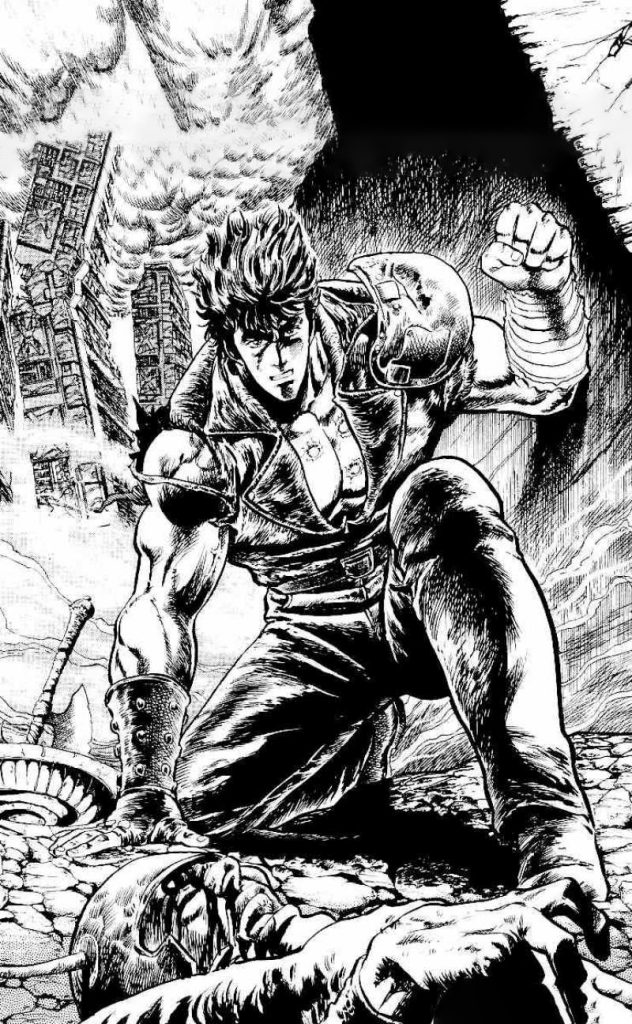
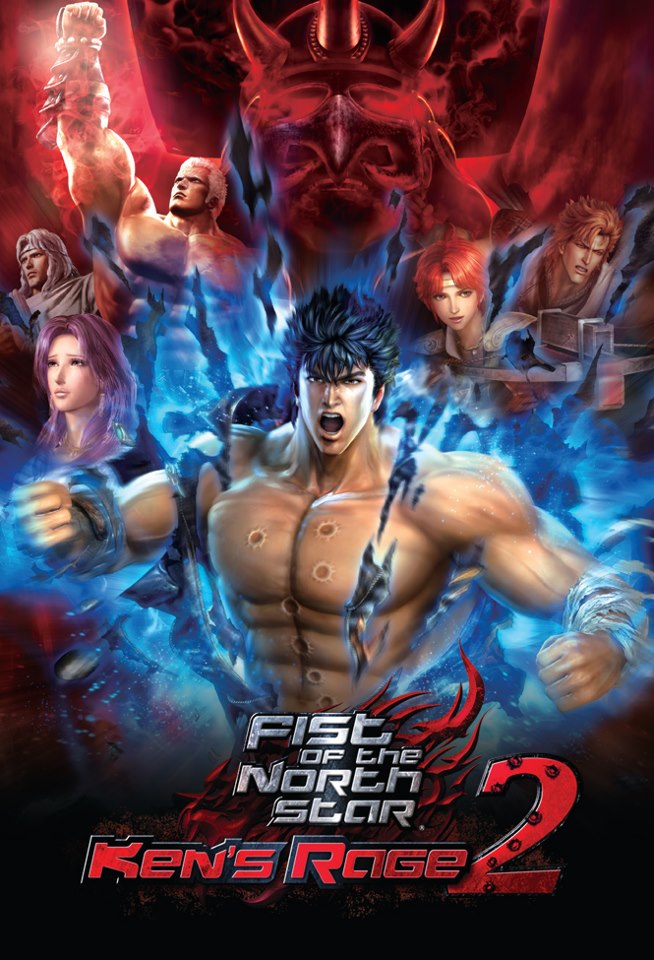
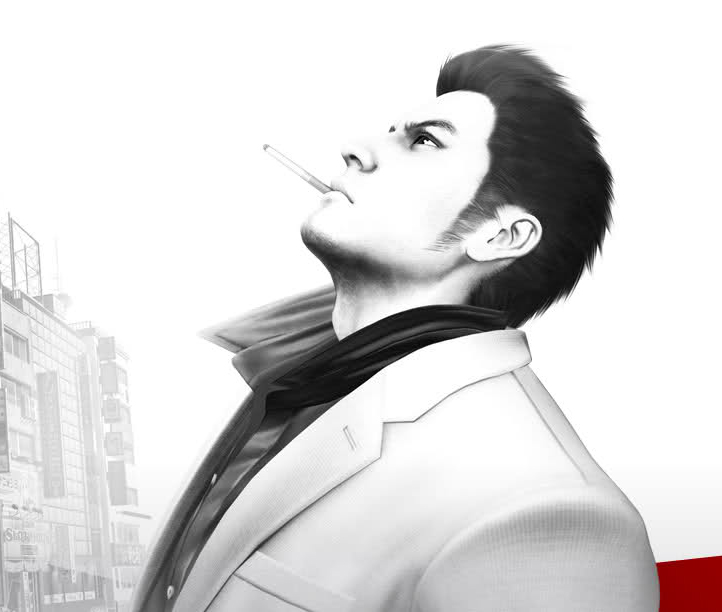

The Manga reader, followers of the earliest hour. Musou fanatics, lovers of the well received Musou title Fist of the North Star: Ken’s Rage’s large fights. Yakuza fans, with their favorite studio at the helm, they can’t help but take a peak. And Action gamers, with Devil May Cry 5 and Sekiro still five months away, this easily took their interest.
That’s a lot of audiences to keep in mind when making game-design decisions. As such, it is best to first focus on what will immediately please all groups: you play as Kenshiro, The Man with the Seven Scars. And you are the hero in this game: The Fist of the North Star.
Kenshiro fights using the art of Hokuto Shinken, a martial form centering around pressure points. Originally conceived by editor Mad Holy, this reference to old chinese kungfu movies and wuxia novels sees Kenshiro immediately stand out. Unlike most games your punches don’t roar like a lion and bones don’t crunch upon impact, instead enemies suddenly fall apart and explode at a single touch; a nice juxtaposition.
The game starts just at the end of the manga’s second volume with Kenshiro bursting rival Shin’s palace doors open to rescue his fiance Yuria. With only a few seconds of cutscenes players are immediately thrust into Ken’s desert boots and the battle begins. Lost Paradise features a few attacks from the outset, focusing on light and heavy attacks that can be intermixed. The player hasn’t even reached the first boss before they are introduced to the title’s two main mechanics:
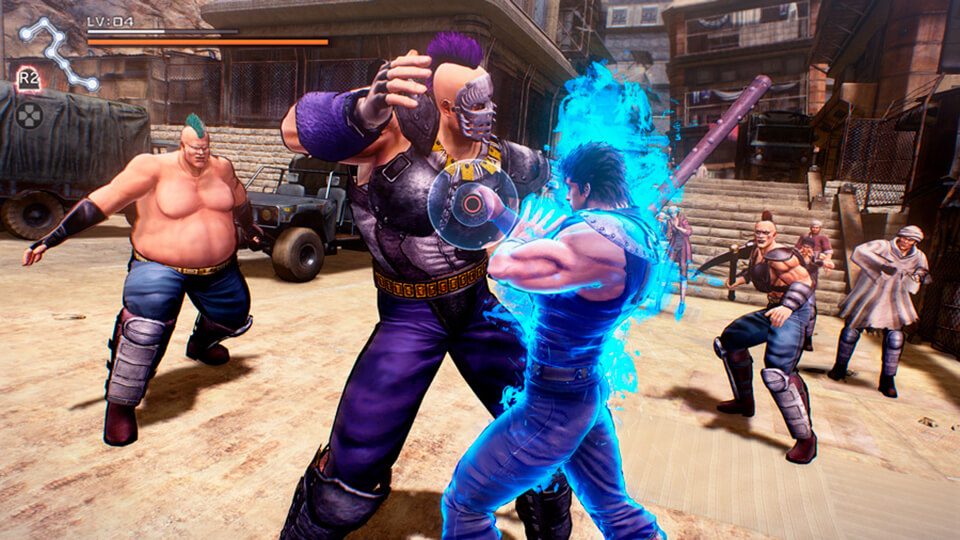
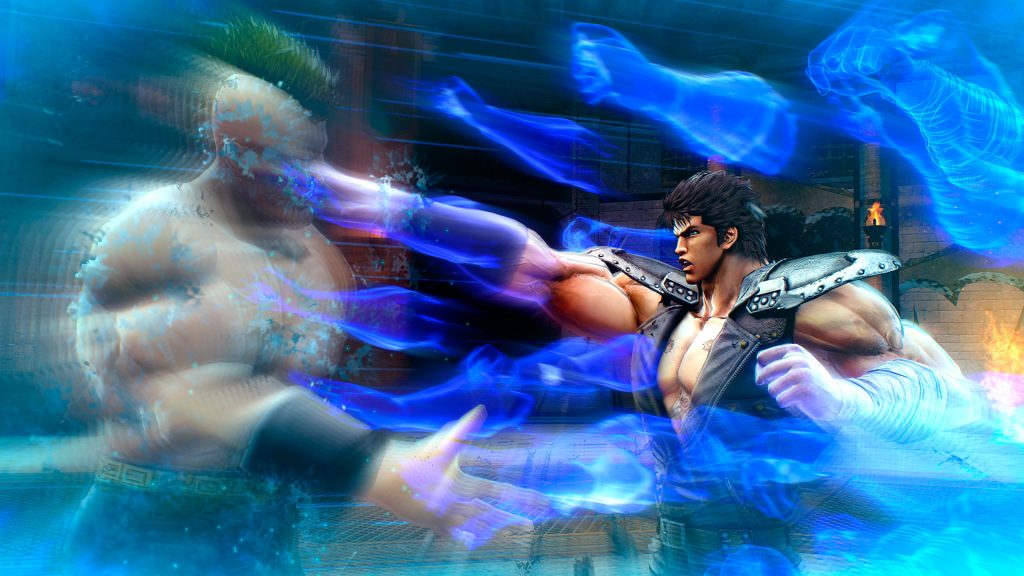
Striking a foe in rapid succession, without being hit, sees a skull-shaped icon fill up. Once full the foe can be staggered using a pressure point strike with the circle button, putting him in meridian shock. When you press the circle button in your attack-string influences which point Kenshiro will pressure, resulting in foes ending in numerous states. Do two strikes onto a pressure point and they’ll be blinded, three hits leads to them kneeling down, or you can do one without any preceding blows to see them be stunned in place.
When shocked, you can use one of Kenshiro’s secret techniques for devastating effect depending on their shocked state. One sees Ken strike a blinded bandit with a two-fingered strike to the forehead causing his skeleton to burst out of their body (Hokuto Kaikotsu Ken, 北斗壊骨拳 Bone Crushing Fist) while another strikes a stunned foe with Hokuto Zankai Ken (北斗残悔拳 North Star Remorse Fist), where Kenshiro strikes the Tōi pressure points of opponent’s temples with his thumbs, after which the victim is given three seconds to live to regret their actions before their body explodes. This all happens while Quick Time Events see you imitate the motions followed by Kenshiro speaking the name of the move as its title is displayed on screen with bold typography and a neat particle effect. It’s visually stunning, gorey, but most of all satisfying, making you feel extremely powerful.
Yet mechanically it’s also immediately surprising. Despite being a special move with accompanying cinematic it is a free action: there is no meter requirement or anything stopping you from performing Secret Techniques on each enemy.
Not surprising, as one of the main audiences of this game are the fans of the source material. With Kenshiro being incredibly loved in Italy, having had great success in America with its anime films in the 90’s and enjoying near legendary status in its home country of Japan, it is understandable that the developer wanted players to be able to constantly to feel like Kenshiro and relive the manga’s fantastical elements in three dimensions.
It is then strange that he’s missing his iconic red shirt from the Fist of the North Star’s early manga chapters. This bright color would’ve dearly helped him stand out from the rest of the game’s brown tones, making its absence noticeable. The graphical style sports sharp black outlines to simulate the manga feel and in an attempt to capture the gloom of a post-apocalyptic setting. While this does make characters like Rei and Shin stand out, in general the game could’ve use a tad more color.
After the lovingly recreated fight against Shin at the end of the tutorial stage, the narrative shifts to the large city of Eden, with Kenshiro still looking for his fiance. From this point on the game takes place in a sort of ‘what-if’ scenario, with all major players from the decade-long manga series present. This gives fans a nice alternative way to see all their favorite characters come to life in 3D, while newcomers are immediately introduced to the big names, piquing their interest in the source material.
Shortly after entering Eden, Kenshiro will start to use a new ability:

The Perfect Channel
These pressure point strikes deal massive damage to a shocked foe, but unlike Secret Techniques they are both faster and more perilous due to lack of invincibility. Players who are growing tired of certain Secret Techniques or just want to finish a fight quickly will opt to use these instead.
Mechanically, Secret Techniques give a little amount of energy to Kenshiro’s Seven Star Gauge meter, more if all the associated QTE’s are perfectly executed. On the flipside, foes killed by a Perfect Channel drop an orb that fills a single orb of meter. Time it perfectly – nearly on the frame – and you’ll execute a Perfect Moment Channel, with a strong crunching sound highlighting its success. For your troubles, you will receive a sparkling blue orb that fully fills the Seven Star Gauge from the crumbled remains of your foe.
Once filled up, Ken can rip his shirt off like in the source material with a loud roar that kills smaller foes, fueling your rage. For 10 shirtless seconds, Kenshiro is all you could desire. It is like an episode of the anime, building up to Kenshiro’s rage bursting, the shirt’s fibers breaking to unleash his true nature. In the game, moves that were once restricted are now available. You can now jump to attack from the air and exclusive Secret Techniques that are extra ‘cool’ and powerful are available. In the end this is what the combat builds up to: Kenshiro ripping foes apart.
These two mechanics are a good example of the game trying to cater to multiple audiences. Fans of the source material can enjoy the loveling-crafted animations with a shirtless finale, while for instance fans of the action genre could toy with the balance of the Secret Technique’s invincibility and the with Perfect Channel’s unsafe but high risk / high reward meter gain.
No matter your origins as a player though, the more blood you spill, the more experience points you will earn. Gather enough and you level up, which give you a White Skill Orb to spend on one of the game’s four talent trees. These offer a nice mixture of styles, ranging from pure combat, to item-use and even one focused on your defence. New attacks like the launcher, dodge attacks and other combinations do see some bosses’ challenge being completely negated, as they can be infinitely juggled. While combinations of other skills might break whole fights, like enemies not really having a way to deal with Kenshiro’s aerial mobility when enraged. In short, balance is an issue.
If you want to become that strong though, you’ll need more than just White Skill Orbs. While the white ones are gained from leveling, others are bought using currency earned with side activities or completing side objectives. These can then be used to buy specific abilities that can only be purchased with their specific color.
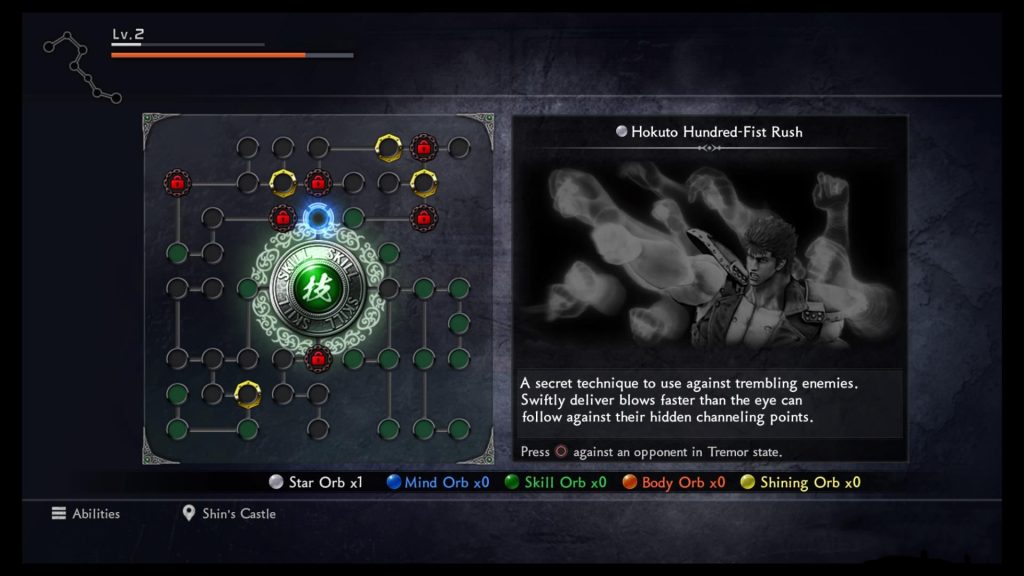
That’s because there’s more to do than just fight. Fist of the Northstar: Lost Paradise holds the tradition of its Yakuza-creators to heart. Even Kenshiro needs a break and there’s plenty of side activities to pursue. Become a bartender and use your knowledge of ancient martial arts to make a killer cocktail, while listening to your visitors woes. Maybe you’d like to take the role of the manager of a hostess club, guiding sexy, tough, beautiful and cute ladies through a short adventure of friendship, loyalty and family. Or race your car across the desert and maybe choose to explore it and its hidden treasures, even unlocking a few hidden areas in the game if you’re dedicated enough! While the barren wastelands outside of Eden can be explored, they are a bit devoid of things to do. The setting sadly doesn’t allow it to be full of life. You can also become a bounty hunter for extra fights, level up secret techniques through use, and collect and level-up talismans. Not to mention the collecting of numerous types of gear and accessories to spice up Kenshiro’s stats.
Talismans are items that allow Kenshiro to channel one of his loyal allies or dishonorable foes from the manga. An illustration covers the screen while we hear a shout and Ken does a move or stance akin to theirs. Some give buffs like increased experience points while others are a singular attack with high damage. These can be upgraded to decrease their frankly insane cooldowns of nearly one hour to around 55 minutes, with some upgrades barely scraping off 1 second from the cooldown. Using more than the designated four Talismans on the d-pad forces players to enter menus constantly as well, leading to often sticking with a few favorites. Due to their power, they can negate whole fights if you don’t mind long breaks in between. With fights already being fairly easy though, these Talismans feel like extreme overkill in anything but the hardest boss fights, where they still operate like a glorified skip-button. Casual players who are stuck might use them, collectors might max them all out while combat fanatics will look for interesting combinations, but in the end they feel underutilized.
To upgrade these Talismans you’ll need certain items. First you’ll need to explore and you’ll soon find a few screws to buy an upgrade part for your car. Then, a few points won by racing with said car to buy a higher quality screw to buy another part. Subsequently, fight in the arena to win that other material you need and don’t forget to visit that one shop to buy rocks to finally upgrade that Talisman to win more fights. And that is just for Talismans. The economy of Lost Paradise uses a lot of items and currencies. In a title about fighting, it would have benefitted from a more universal currency and singular shop instead of spreading it through a city and a thousand and one menus.
This padding is present in a lot of elements of the game. Leveling talismans takes a lot of items, but also time – having to sit through the upgrade animation constantly. Fully upgrading one can take up to five minutes. Some talismans are also very weirdly designed, as there are many that perform the same function, while others are extremely questionable. One example of this is ‘Unconscious Transmigration of Souls’ giving you a five second attack buff where Kenshiro gains a new moveset on a one hour cooldown – not a big reward for beating the game.
Meanwhile Eden at first appears rife with life, but eventually changes running from to A and B, where everything in between is ignored since you cannot really interact with the inhabitants. Occasionally, while exploring Eden, you’ll encounter a random set of enemies, ready to fight.
The basic fodder serves as nothing more than an nuisance and means to make you feel powerful. Bigger foes can hit hard if they attack and knock you down. Some foes though are Elite and as a result are immune to some counter- and aerial Secret Techniques, yet for some reason you cannot clearly see when a certain enemy is elite. This turns some fights into a guessing game if a certain ability will work. Secret Techniques also have a three second cooldown, making the guessing game even weirder.
Bosses are very different though. Starting with a manly discussion of honor, the combatants are accompanied by epic music worthy of praise. Eyes gaze, fists meet and the battle start as an ink smear highlights the foes name. At first they’ll dodge a lot and hunt you down, making for an epic encounter of ducking, weaving and going back into the fray. However, around 50% health most bosses will activate their second phase, suddenly seeing them dodge a lot more and read your inputs to deliver impossible counters. This will make your first boss battles feel more like you won by sheer luck than skill, but also makes later fights more engagements of exploitation than actually challenging battles. Instead of holding lock-on while circling your foe in an epic fashion you’ll end up run around in circles waiting for them to do an unsafe attack and punish it. Epic fights meant to give your blood pumping instead make you dizzy.
It’s a hard sell. When you play the game as seemingly intended, the game doesn’t function fully at times and can result in unfair brawls. Yet when you play it perfectly, it can get boring fast. This doesn’t work well with the game’s aim to please please multiple audiences.
One might be a fan of the manga and anime and want a fast and easy power fantasy paired with tons of nods to his favorite series and easy access to the signature moves. Some might have joined because of Ken’s Rage legacy, looking for large scale battles with strong super attacks to use against hordes of enemies. Action fans, or others, might want to improve their play. They’ll balance their Seven Stars meter perfectly using Perfect Moment Channels, use certain signatures moves to escape dangerous situations and juggle bosses infinitely. They’ll toy with equipment loadouts, perhaps an armlet that increases damage dealt when on low health or a set of items that increase the length of burst
The game’s mechanics give players freedom to tailor the game to their desire. At the same time though it also leaves the game too open, resulting in the aforementioned strange difficulty curve, held back further by its boss design.
Those looking for a bigger challenge can tweak the difficulty through leveling choices, personal challenges and more with the game also allowing you to fight bosses again through an arena. EX-hard mode and DLC Original mode are an option. Both remove checkpoints, allowing you to only reload from a previous save while the latter also changes up some levels of foes, leading to some drawn out fights early on. They do not mix up enemy encounters though, a missed opportunity.
As a result the game is best played freeform, running around, doing juggles and enjoying the epic grand scale of it all. Sit at the edge of your seat, shout in bad japanese what Kenshiro is saying and “atatatata” with him to the next faithfully animated Secret Technique.
And that’s exactly what a Fist of the North Star game should be like nothing can stop you. No matter how you play it, it is still satisfying. What could have been a great game for one audience, instead turned into a fun one for a lot of people. That alone was a sacrifice worth making.
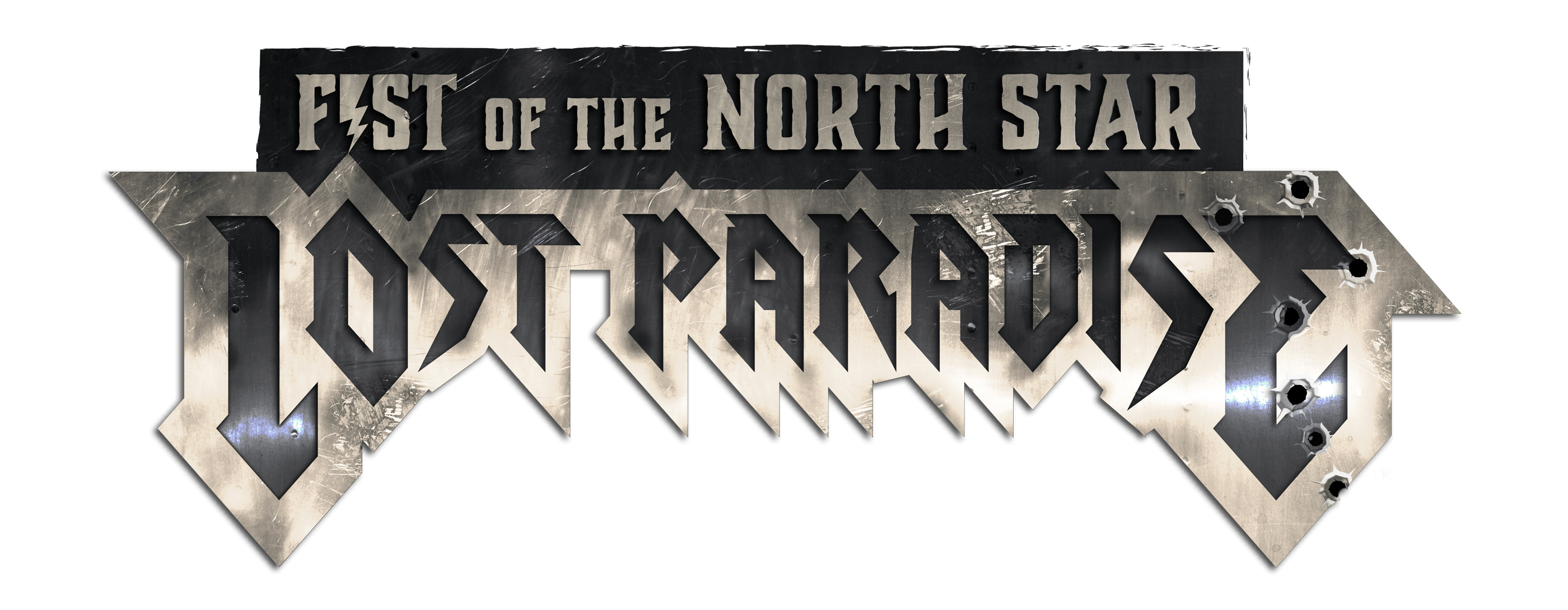
鑒 reflection style 鑒
In this short section I reflect on the article from my own viewpoints as a gamer and lover of the genre instead of a critic.
I always knew about Fist of the North Star through the memes, but it wasn’t until my early 20s that I tried to watch the anime. While a bit slow and repetitive, I was taken aback by how much emotion the protagonist Kenshiro displayed, expecting a stoic and brazen hero. For a while I tried to get my hands on a translated set of the manga which proved impossible. It wasn’t until this game was announced that I fully dove into the series mythology.
So which target audience of Lost Paradise do I belong too? I think I’m in the action camp that slowly discovered more about the series through playing it. Going into it I was indeed looking to fill out my calendar, but I also had faith in the game, being a big Yakuza fan. Looking back, the title was ‘okay’ in my eyes, at least in terms of mechanics. As a whole it is a very fun game, but not one I’ll revisit in the coming years like some others on this website, and that is mostly because of the audience part. When you play it, it always feels slightly ‘off’, since while there’s something for everyone to like there’s also something for everyone to dislike. I honestly cannot imagine them doing a better job, pleasing all these audiences, but secretly I would have prefered them to just pick one and roll with it. Then it might not have been for me at all, but it would have really pleased one audience, instead of making everyone feel it was just alright.
A game that did do this would be the earlier Japan exclusive Hokuto no Ken – Seikimatsu Kyuuseishu Densetsu, a Playstation 1 title from 2000. This game was a complete recreation of the manga in video-game form, even sporting a remake of the anime opening in the game’s own engine. This title had a clear audience: fans. And I believe it was all the more memorable for it in the end, as fans would often cite the title and recommend it to fellow fans. Lost Paradise feels like a fun diversion, nothing more.
斬 postscript notes 斬
- Strangely, Kenshiro doesn’t really act like himself. Throughout the title he acts more like Kiryu Kazuma from the Yakuza games, with whom he shares a voice-actor. In the manga and anime Kenshiro was a warm and loving individual that wasn’t afraid to shed a tear, or many. Yet here he’s more stoic and prone to the out-of-touch nature of Kiryu;
- The first eights weeks of the game’s release saw multiple costumes, items and talismans be added as free DLC. Strangely the already present Doctor Kenshiro outfit never became selectable;
- Unlike their earlier work of Yakuza 6, Fist of the Northstar was made using the engine of Yakuza Zero – with which they were more familiar – to save time;
- The Fist of the North Star brand has gone on to become the 18th highest grossing media franchise world-wide, beating out properties like Toy Story, One Piece, James Bond, Call of Duty and even The Simpsons;
- The iconic song “You Wa Shock”, also known as “Ai tomodose”, is only present in the Japanese version. A big shame since it’s a fantastic tune;
- Since its inception it has inspired numerous media. Like the mangas Toriko, Berserk and Jo Jo’s Bizzare adventure. While also influencing artists like Rob Liefeld who would go on to create Cable, but also video-games like Street Fighter
- I always found it interesting how creative the writers of the manga got with what Hokuto Shinken could do. Starting with regular pressure points to kill foes to slowly adding mind control, freezing people in place and curing blindness.
- Special attention should be given to the Secret Techniques. Not only are they faithfully animated, they showcase a good use of slowdown and lingering shots;
- Very special thanks to twitter user Art-Eater for answering in-depth questions I had about the Fist of the North Star source material.

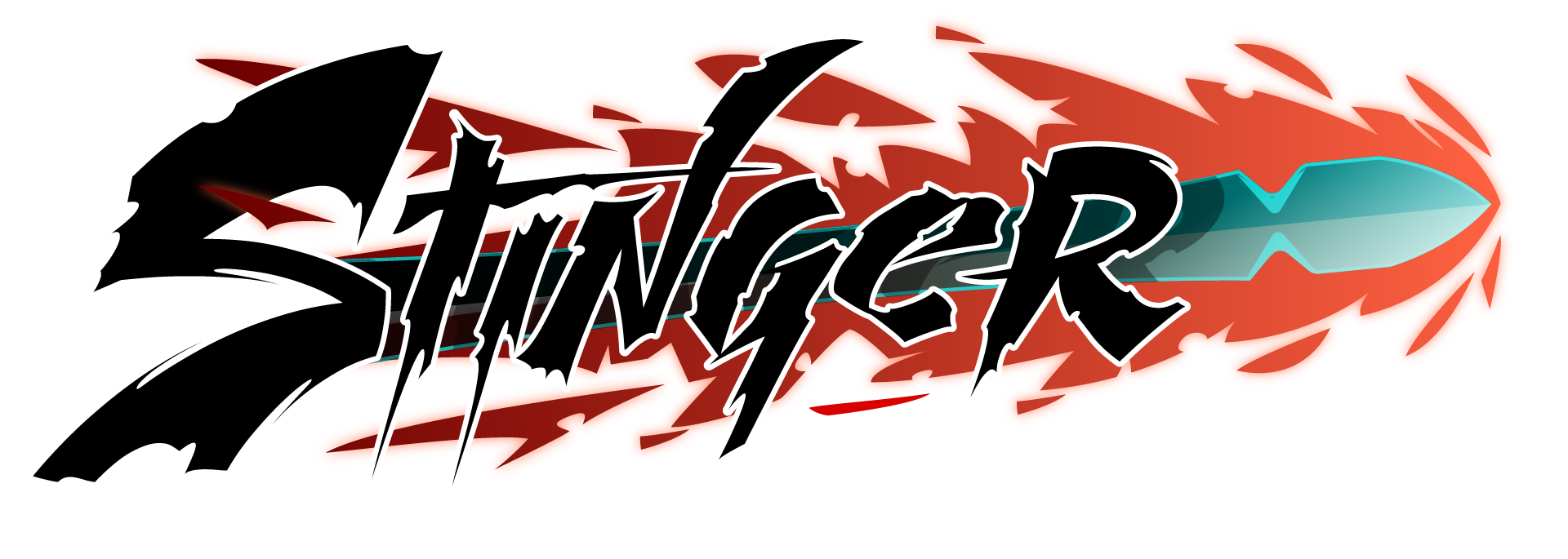
1 Comment